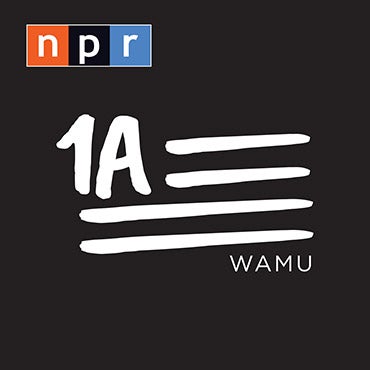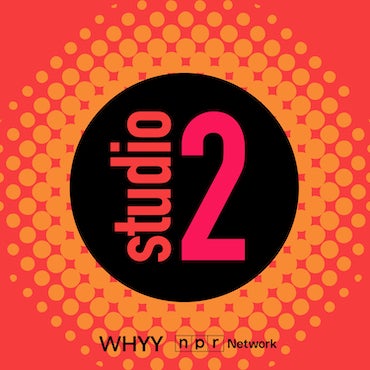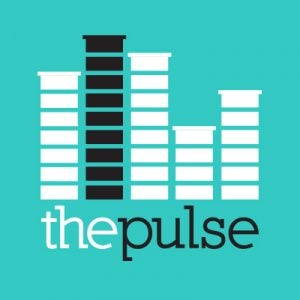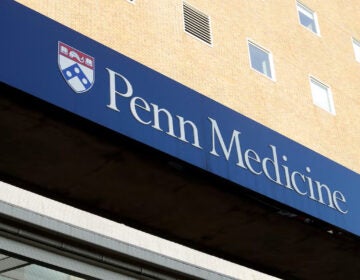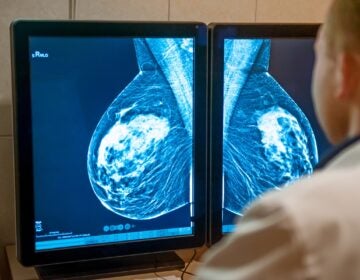Empowering blood cancer patients to share their data for research
Started by a patient, HealthTree lets blood cancer patients look for clinical trials and treatment options, as well as share their data with researchers.
Listen 7:33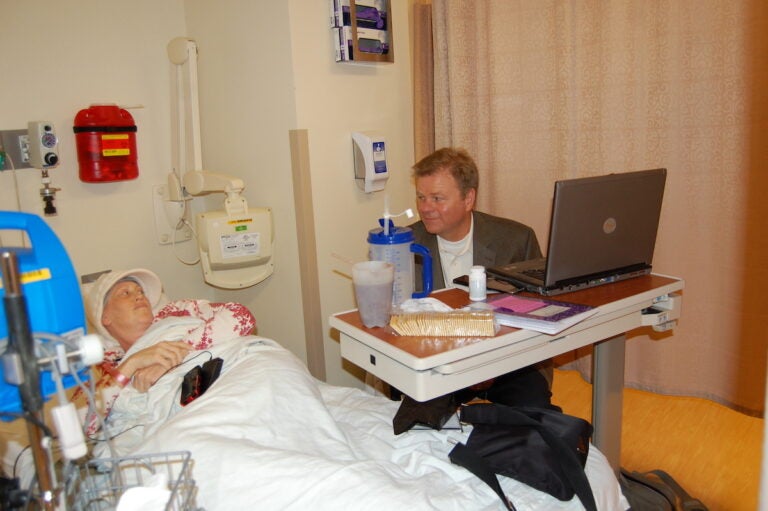
Blood cancer patient Jenny Ahlstrom and her husband Paul wait together in the hospital as Jenny prepares for a stem cell transplant treatment. (Courtesy of Jenny Ahlstrom)
This story is from The Pulse, a weekly health and science podcast.
Find it on Apple Podcasts, Spotify, or wherever you get your podcasts.
Bad advice. That’s what Jenny Ahlstrom felt like her brother-in- law, David Ahlstrom, was getting, after he was diagnosed with acute myeloid leukemia, an aggressive type of blood cancer, in 2004. For example, when he was hospitalized with respiratory distress related to his illness, his family was told he had just hours to live, and they should just let him go.
Instead, Ahlstrom and her husband went online, searched far and wide, found an existing drug that could potentially help David — and convinced his doctors to try it.
“They gave it to David and 72 hours later, he was riding a stationary bike and was able to get out of the hospital. He lived another six months after that,” she said.
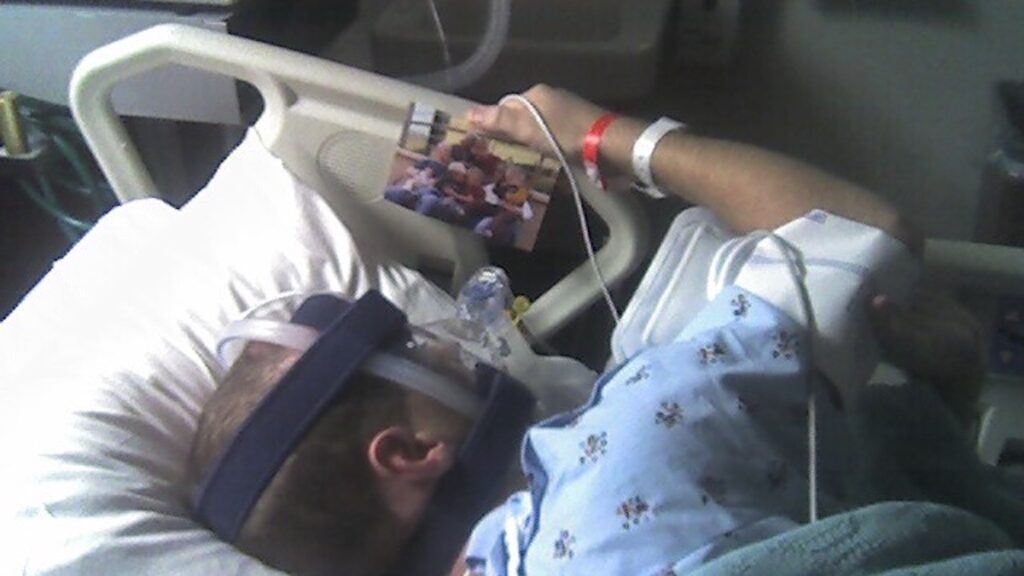
But Ahlstrom and her family wondered, why did they have to intervene and find this treatment option?
“As a family, we just thought, that’s really crazy,” she recalled. “Why didn’t we have the data to understand this problem? Why didn’t we have the data to understand this is a potential solution for him and for others? None of his peers will ever know that that worked for him for an extended period of time.” The drug didn’t get approved for this indication for another 14 years by the U.S. Food and Drug Administration.
Ahlstrom says doctors also told her brother-in-law to start with chemotherapy to treat his cancer — and to wait to try a stem cell transplant. But by the time he had gone through all the chemo options, he was too sick for the transplant. David died just a year after getting his diagnosis.
After losing him, Ahlstrom had so many questions on her mind. “Why don’t we have these insights when we need them? Why aren’t we using data to make personalized cancer treatment decisions,” she wondered.
Ahlstrom and her husband, Paul, felt motivated to change this. They started building a platform that could help patients navigate their diagnosis and find individualized, up-to-date resources and treatments. They named it: HealthTree.
But life got busy, and the website project stalled. Paul got a new job and the family moved from Utah to Mexico. There was so much going on, Ahlstrom felt exhausted all of the time, but she chalked it up to being a mom of six kids and moving to a foreign country.
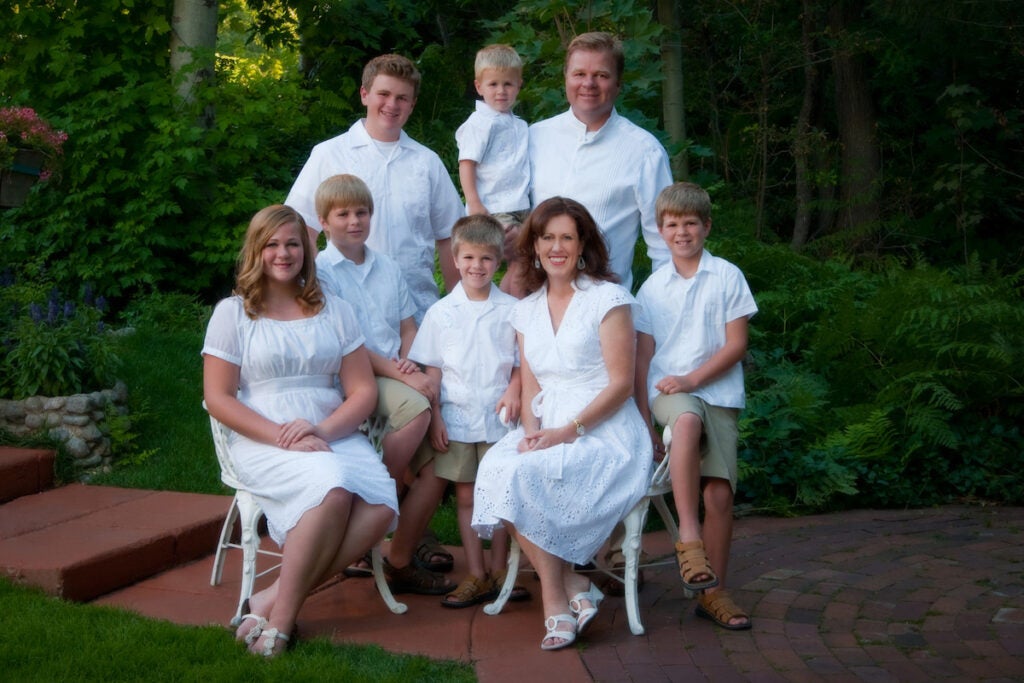
“Our kids were ages two to about 15. And that’s a lot of kids to try to manage and so I just thought, ‘Well, who isn’t tired moving to a foreign country?’ But I was so fatigued that I would have a personal tutor come over to teach me Spanish in the morning and I would fall asleep during my lesson.”
Eventually, she realized her fatigue was a sign of something more — something was wrong. In 2010 after a big checkup, she got her own very serious diagnosis; multiple myeloma, another type of blood cancer.
After having seen what her brother-in-law had gone through she wanted to take a very active role in researching her own treatment. She also felt really motivated to get back to working on the HealthTree website.
“We’re going to advocate for ourselves. We’re going to advocate for others. We’re going to get educated. We’re going to do the research,” Ahlstrom said.
The main issue she wanted to address was the lack of data on treatments and outcomes.
“So, I went to my first doctor and I said, ‘Show me the data for patients that look like me, that are younger, that have a high risk feature. What do they get for treatment and how do they respond? If you show me the data, I’m going to pick the best path for me.’ Nobody could show me that. Nobody. And that didn’t make sense to me as a patient.”
Subscribe to The Pulse
Ahlstrom says doctors don’t have good data because researchers don’t have good data either.
“It’s messy, it’s missing, it’s incomplete, it’s not representative of the whole patient experience,” Ahlstrom said.
Take her experience, she first received treatment at a cancer center in Texas when the family still lived in Mexico, and later transferred to a provider in Utah when the family moved back there. Each medical center only had partial information, only the patient has access to all of the medical records, all of the pieces to the puzzle.
Ahlstrom asked herself, what if patients uploaded their own data to her website, allowing it to be accessed by researchers, to speed along progress and discovery?
She successfully completed stem cell transplant treatment, her cancer went into remission, and she became the CEO of the HealthTree Foundation, putting a lot of her time and effort into building out the site.
She took her idea on tour, she visited 50 cities, and spoke to over 800 blood cancer patients. And she asked them: Would you share your data? Everybody she asked said they would gladly share their information.
HealthTree now offers all kinds of information to blood cancer patients. It helps them look for clinical trials, treatment protocols, or brand-new treatments. Patients can also use a tool called “the twin machine,” something Ahlstrom wished she had when she was first diagnosed.
“I had a specific genetic feature and I was a younger patient. I wanted to see a list of all the patients that looked like me.” The twin machine matches patients with others who have similar features. “You can’t see who they are, but you can see their past therapies, how long they remain in remission. You can see their genetic features.” People can also reach out to each other and ask to connect. “Because you might have a question like, ‘Why did you decide to do this over this?’”
The site is also moving the needle for researchers. Patients upload their data, which is anonymized – but it offers a complete picture, it includes all of the medical records from different treatment centers. Everything is organized into a single patient profile and the data is made available to researchers and treatment providers.
Ahlstrom says HealthTree recently conducted a patient survey for a myeloma investigator.
“We had 1,500 patients respond within four weeks, which is unheard of for clinical trial recruitment timeframes. And then we gave him the data for free,” Ahlstrom said.
The researcher told her that it would have taken him a lot of time and money to do the same work. “He said, ‘well, I wouldn’t have had 1,500 patients at my own center. So, I would have had to sign a data sharing agreement with somebody else. Then I would have had to hire a research coordinator, who would administer all the surveys, aggregate the data, and then do the analytics.’”
Ahlstrom said the researcher estimated that this would have cost $150,000 and taken a year and a half. “I mean, no wonder we’re not getting cured faster. To me, it’s just unbelievable that it would take this long to get through research,” she said.
Ahlstrom says working on this site has been really meaningful for her.
“It makes me want to cry all the time. I love doing it. I love supporting patients.”
One user recently told Ahlstrom the site saved his life. He said he found a new treatment option that his doctor was unaware of, they used it and it worked for him.
Ahlstrom’s goals remain the same: support patients, support treatment providers, support researchers. “We just want faster cures. That’s it.”
WHYY is your source for fact-based, in-depth journalism and information. As a nonprofit organization, we rely on financial support from readers like you. Please give today.
